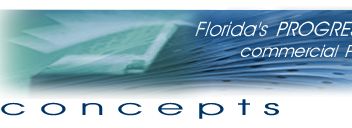C
|
|
calendering
|
Making paper smooth by pressing it between highly polished
metal rollers.
|
|
calibration bars
|
A strip of tones printed on paper or film and used for quality
control.
|
|
caliper
|
The measure of a paper's thickness, usually in thousandths
of an inch (referred to as "mils" or "points").
|
|
calligraphy
|
A distinctive style of artistic handwriting created by using
special pen nibs that allow a calligrapher to vary the thickness
of a letter's line elements. The art flourished from the fourteenth
through eighteenth centuries.
|
|
callout
|
A quotation, often surrounded by a box, that uses large text
to set it apart from the rest of the page. The effect is to
draw attention to the page contents.
|
|
camera-ready copy
|
The final image composition of line art, photographs, text
and other graphic elements laid out in the size, position,
and color they will be when reproduced on film or paper. Camera-ready
copy can be created digitally with a computer system or manually
with a paste-up board. Other Term: camera-ready art.
|
|
cap height
|
A measurement from the bottom of a capital letter to it's
top.
|
|
caps
|
Capital or uppercase letters.
|
|
Caps, small
|
Capital or uppercase letters that are about the same height
as the lowercase version of the font.
|
|
case binding
|
Creating hardcover books by gluing cover material to a stiff,
board-like substrate which is then attached to the book's
endpapers. Other Term: edition binding.
|
|
center spread
|
The two pages that face each other in the center of a book
or publication.
|
|
China clay
|
A white clay used to coat papers or as an ink additive. Other
term: kaolin.
|
|
choke
|
A photographic process that creates a thinner image of the
subject without changing its position or shape. The result
is similar to removing a thin line from the subject's outline.
A choke allows the background color to slightly overlap the
subject thereby preventing any unwanted white space between
the two areas. See also: bleed; registration; spread; trapping.
|
|
clip art
|
Graphic images, designs, and artwork in digital form that
can be copied and pasted into a digital document or image.
Clip art can be obtained on diskette, CD-ROM, or as a download
from the Web with pricing that ranges from free to pay.
|
|
collate
|
Assembling the pages of a document in correct order. See
also: assembling; gathering; inserting.
|
|
composition
|
Positioning, formatting or gathering type prior to printing.
See also: pagination; page makeup phototypesetting; typesetting.
|
|
compression
|
See data compression.
|
|
contact negative
|
A photographic image with tones that are the reverse of the
original. White is black and black is white for example. A
contact negative is created by placing a film positive against
unexposed film in a vacuum frame and exposing it to light.
|
|
Contact positive
|
A photographic image with tones that are the same as the
original. White is white and black is black for example. A
contact positive is created by placing a film negative against
unexposed film in a vacuum frame and exposing it to light.
|
|
Contact screen
|
A clear film with a small dot pattern that is overlayed on
film during the developing process to create a halftone from
a continuous-tone image. See also: halftone screen.
|
|
copyfitting
|
Making adjustments to text size, text leading or otherwise
editing the text so it fits in a given space.
|
|
crossline screen
|
A halftone screen created on plate glass. The screen is in
the form of an opaque grid of lines that frame transparent
squares. See also: halftone screen.
|
|
crossover
|
See spread.
|
|
cut sheet
|
Paper cut into standard dimensions (e.g., 8.5x11 in., A3,
etc.).
|
|
cyan
|
One of the four process colors, CMYK, with C standing for
cyan. Cyan is a predominately blue color with some green.
Cyan, together with magenta and yellow, is also one of the
three subtractive primary colors. See also: process colors,
subtractive primaries.
|
|
cylinder press
|
A device were the substrate to be printed is wrapped around
a roller and then brought into contact with the inked plate
or screen.
|





